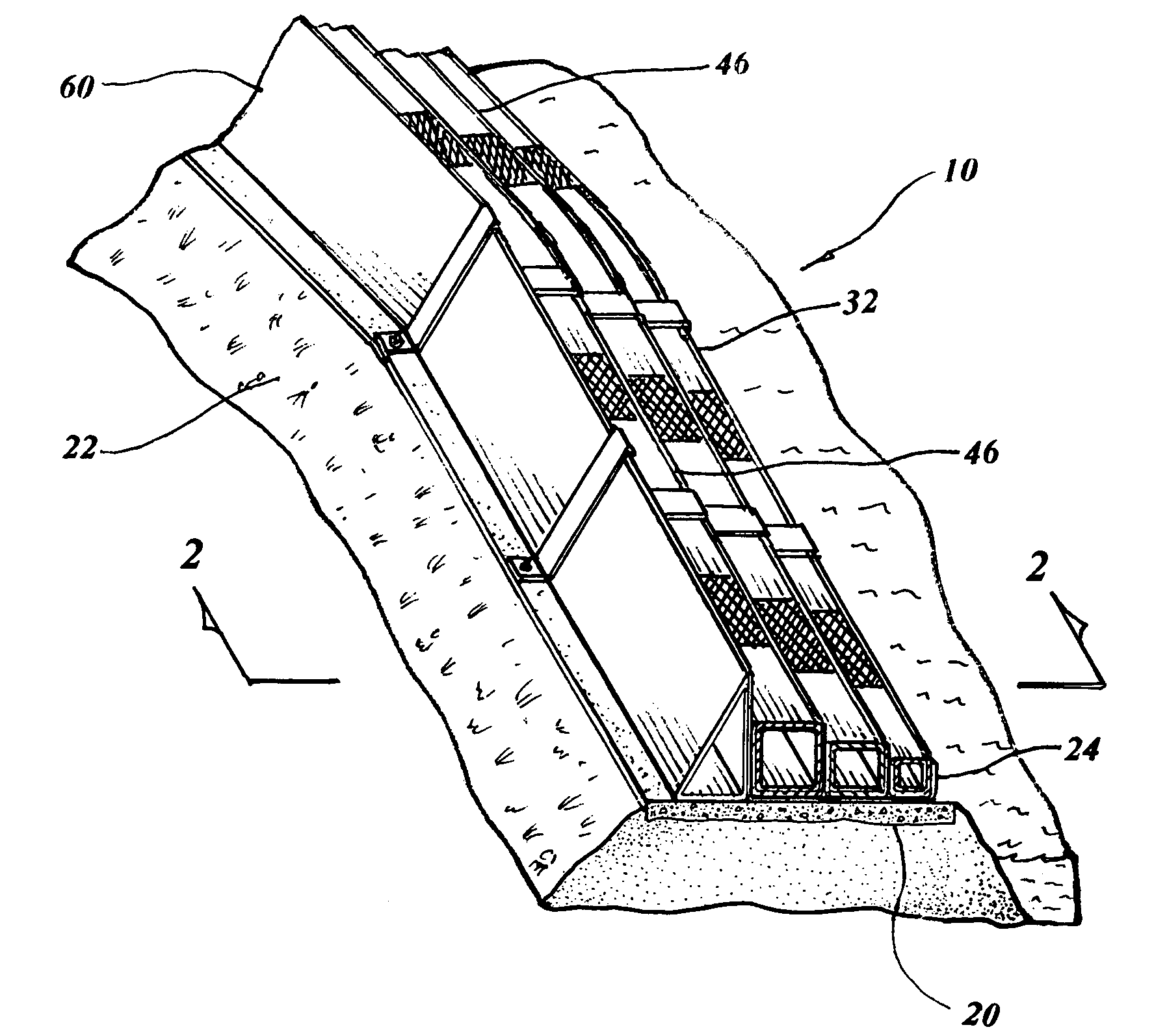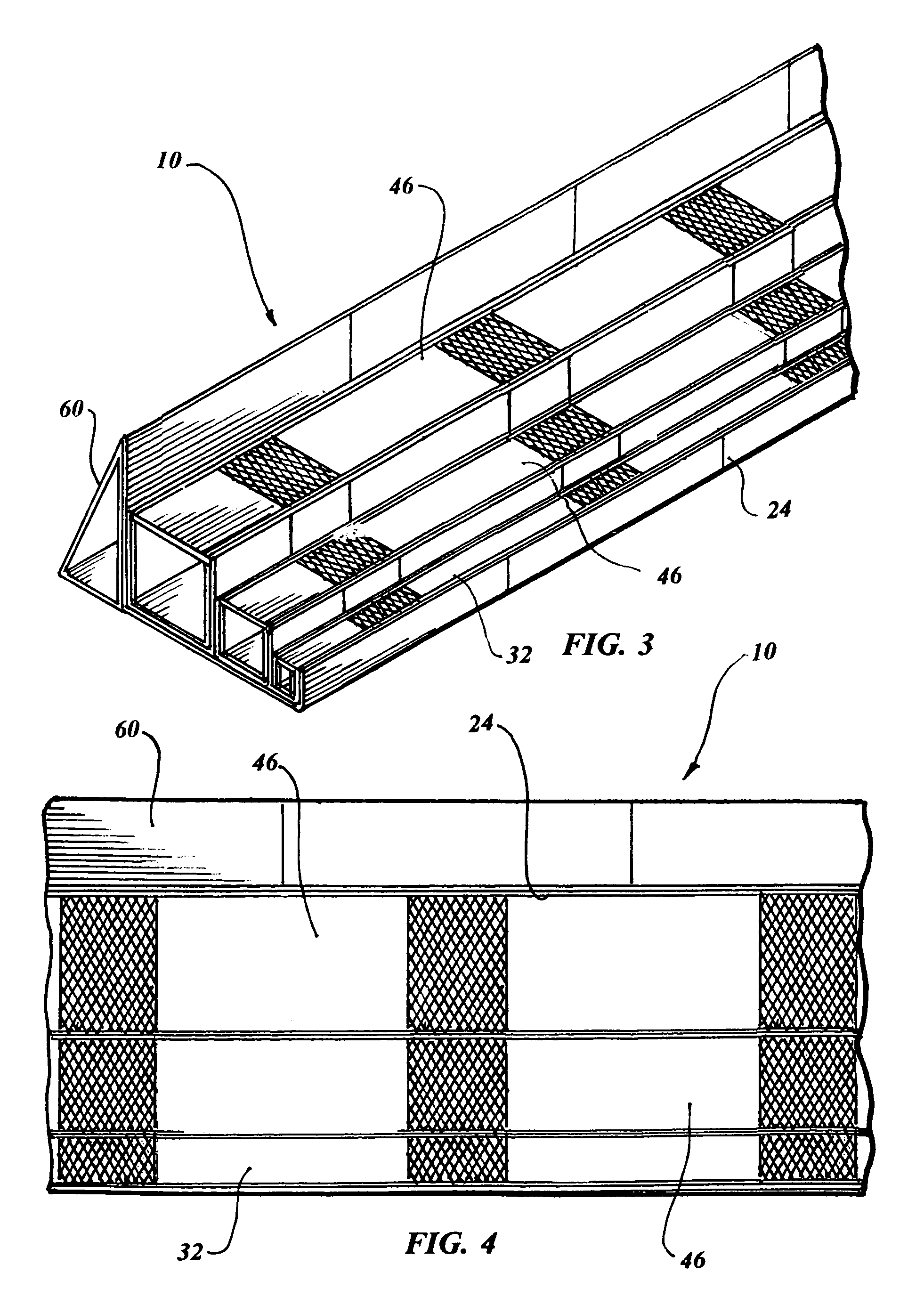Sectionalized flood control barrier
a flood control and sectional technology, applied in the direction of piers, groynes, breakwaters, etc., can solve problems such as cataclysmic damage, and achieve the effects of preventing leakage, reducing labor intensity, and being easy to handle and assembl
- Summary
- Abstract
- Description
- Claims
- Application Information
AI Technical Summary
Benefits of technology
Problems solved by technology
Method used
Image
Examples
Embodiment Construction
[0041]The best mode for carrying out the invention is presented in terms of a preferred embodiment for a sectionalized flood control barrier 10 that is placed on a levee or a river bank. The preferred embodiment of the barrier 10, as shown in FIGS. 1 through 21, is comprised of a footing 20 that is disposed on top of a levee 22 or adjacent to a river bank. The footing 20 includes a conventional means for attachment such as protruding studs, recessed threaded fasteners, holes for expansion bolts or the like in concrete embodiments all of which are well known in the art and therefore not illustrated in the drawings. While the footing 20 is preferably made of concrete, as illustrated in FIG. 11, sod groundwork such as depicted pictorially in FIG. 12, or compacted soil, as shown in FIG. 13, may be utilized. Both sod groundwork and compacted soil will function properly for the use intended, however the attachment means would require other well known conventional techniques such as piles,...
PUM
 Login to View More
Login to View More Abstract
Description
Claims
Application Information
 Login to View More
Login to View More - R&D
- Intellectual Property
- Life Sciences
- Materials
- Tech Scout
- Unparalleled Data Quality
- Higher Quality Content
- 60% Fewer Hallucinations
Browse by: Latest US Patents, China's latest patents, Technical Efficacy Thesaurus, Application Domain, Technology Topic, Popular Technical Reports.
© 2025 PatSnap. All rights reserved.Legal|Privacy policy|Modern Slavery Act Transparency Statement|Sitemap|About US| Contact US: help@patsnap.com



